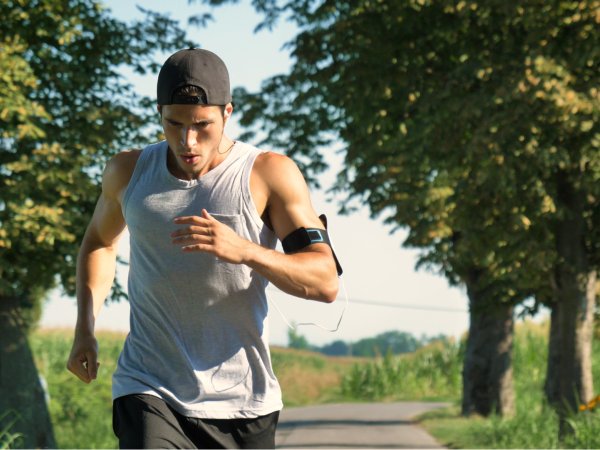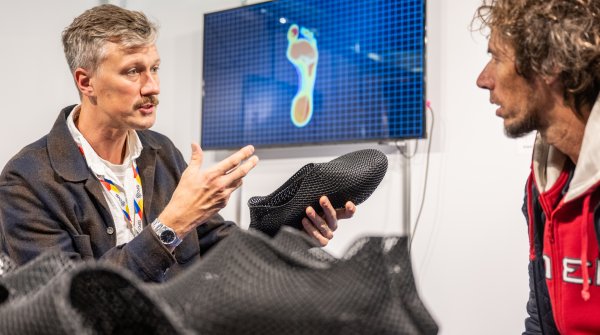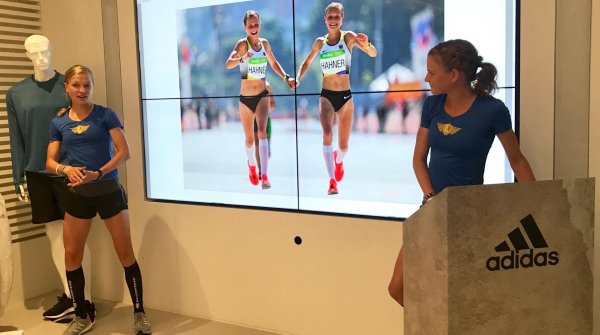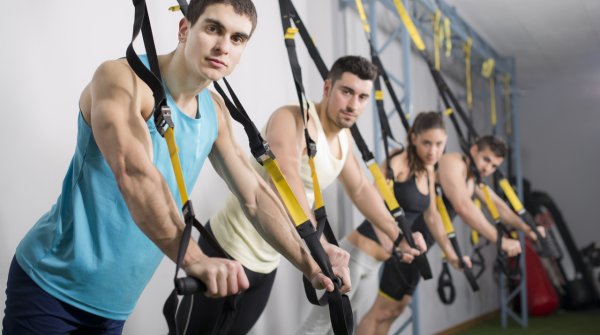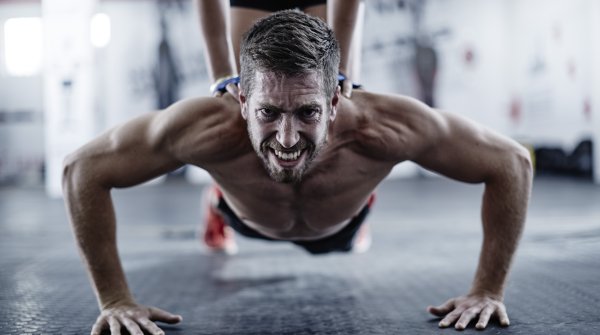Many users - both beginners and pros - want simple ways to plan routes, measure distances, and track performance. For those working in sports technology or fitness software, this is a chance to tap into the growing fitness app space that generated $3.98 billion revenue in 2024 and design more user-friendly features like GPS route mapping, real-time distance tracking, and progress insights. Wearable makers and navigation platforms can also benefit by offering tools that connect smoothly with apps like Google Maps. Providing smart, simple solutions that help users plan and track their outdoor activities not only builds trust but also improves customer satisfaction. The future, as the upcoming ISPO 2025 in Munich will showcase, lies in helping people explore more—smarter and safer.
Especially if you are new to running, it is important to plan your running routes in advance. Otherwise, it is very difficult to know how far you will run. This leads to under- or overestimating oneself and to a lower training success. Without a fixed running distance, runners tend to turn around faster and "give up". But even experienced runners should plan their own running route before the run and measure it during the run. In this case, a suitable time measurement is especially important. This helps you to better understand your own progress and not to lose the fun of running.
According to Strava data, runners who plan and track their routes are 44% more likely to maintain consistent weekly activity. Another study by RunRepeat shows that 81% of runners say having a pre-planned route helps them stay motivated. These tools also drive app usage—users with access to route planning and tracking spend more time on fitness apps compared to those without.
With the fitness tech market expected to reach $14.7 billion by 2026, enhancing route planning capabilities can be a great business booster. It also allows for better performance analytics, helping platforms personalize training feedback. For brands in this industry, offering seamless, intuitive mapping tools means staying ahead in a competitive and rapidly growing market.
For brands making running gear, shoes, or offering fitness travel, knowing how people plan their routes helps you create better products and services. Shoe brands, for instance, can promote specific models based on terrain preferences—urban, trail, or track. Travel operators offering fitness experiences can design routes with minimal interruptions, tailored to runner comfort.
Even city planners and park management services can use this data to improve running paths and minimize stop points, making public spaces more fitness-friendly. When brands align with how and where people run, they build deeper trust and long-term customer engagement.
The most popular tool to plan a running route is undisputedly Google Maps. Everyone knows the website or app and everyone has probably used it at some time or another. The good thing is that you can plan a running route using Google Maps or cycling route.
The fastest way is the internal route planner of the app. Here you can enter the start and end point of your running route. In the meantime, especially in densely populated areas, one can rely very well on the available transport options, which give the user the possibility to consider the route as a footpath or cycle path. The walking distance is then displayed as the total length of the route. To individualize the suggested path to do this, set one or more stopovers.
For companies in the GPS and mapping technology sectors, understanding how users utilize Google Maps for route planning offers key insights. Whether it's running or cycling, users value ease, accuracy, and customization—features that can guide product development for apps and devices. For example, incorporating similar features into fitness apps or wearables can increase user engagement and retention. Additionally, mapping services can improve by offering customized routes tailored to specific activities, such as running or cycling, helping to meet growing demand in the fitness technology market. With more people using digital tools for outdoor activities, there’s a clear opportunity to develop smarter, more user-friendly solutions that enhance the running experience.
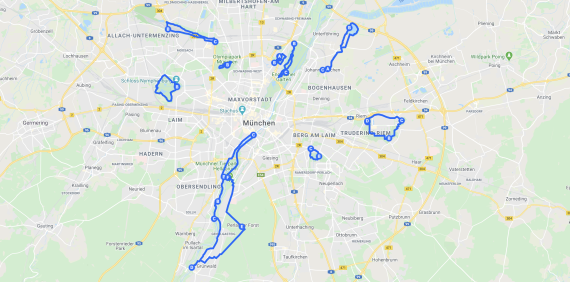
However, since most people don't want to run in the city centre and you often know your way around the mountains or the countryside better than the app, you also have the option to learn how to plan a running route on Google Maps in just a few steps:
Simply open the Google Maps App or website
With a click on the map (on the smartphone tap and hold briefly) a pin appears
On the computer, right-click on the point and select "Measure distance".
On the smartphone, the position of the previously set pin is displayed at the bottom of the screen. Now press on it and also select "Measure distance".
With further mouse clicks onto the map you can set any waypoints on the computer.
Click "Add point" on your smartphone to add a new waypoint.
The total distance between the points is now measured automatically.
Of course Google Maps is not the only way to plan a running or cycling route. There are numerous websites and apps on the internet that are designed for this. Tools such as onthegomap.com work similarly to Google Maps, but are more intuitive to use. All you have to do is go to the website and click on the map to set waypoints.
But sometimes you just want to find a new and suitable route quickly without having to plan it yourself. Applications such as Strava, MapMyRun or Komoot can help here.
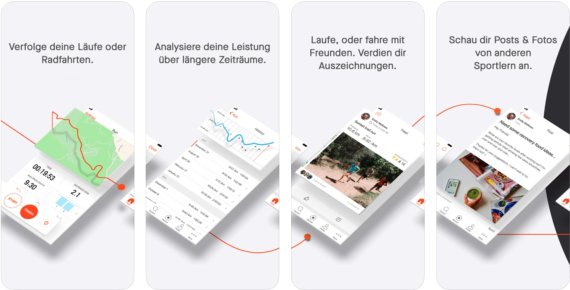
Strava is one of the most popular apps about running and cycling. Strava's mobile app and website were designed by athletes for athletes and connect millions of runners and cyclists. Strava enables the tracking and planning of running and cycling activities. With the premium version of the app, even routes of other athletes can be used. You enter how far you want to run and whether you want to avoid climbs and hills, and the app now suggests numerous nearby routes based on where other runners and cyclists have run or ridden. Of course Strava also offers the possibility to plan routes yourself.
The demand for social fitness experiences is growing, as seen with Strava’s millions of active users. Businesses can tap into this trend by developing apps that allow users to discover, share, and customize routes based on community data. Such features boost user engagement, create a sense of community, and offer valuable insights into local running trends. The gigantic fitness tech industry presents opportunities to create more tailored, interactive solutions for active individuals.
The running app MapMyRun also offers runners the possibility to plan their own routes or search for popular running routes nearby. The app also allows users to save favorite routes and access them in the app if they get lost during the run.
By supporting route planning and saving features of MapMyRun, businesses like sports retailers, running gear brands, and event organizers can offer tailored experiences that resonate with runners. Retailers can create tailored promotions or partnerships, linking running gear sales to popular routes or event planning. Event organizers can leverage the app’s route-sharing function to promote races or fun runs, fostering a stronger connection with participants. As the running community grows, these integrations create new opportunities for businesses to engage with athletes and increase brand loyalty.
Komoot is a particularly popular app among cyclists, which allows you to plan cycling routes. The advantage with Komoot is the direct link to numerous cycling computers such as Garmin Edge or Wahoo Elemnt. Komoot also has the advantage of being able to access popular running and cycling routes of other users.
Komoot’s route-planning feature, paired with compatibility with popular cycling computers, offers a chance to enhance product value by connecting users to optimized routes. For cycling gear companies, this presents an opportunity to promote equipment specifically personalized to the popular routes accessed through Komoot. Event organizers can also use the app to highlight race routes, boosting participation and visibility. As cycling continues to grow in popularity, partnering with Komoot offers businesses an edge in tapping into an active, engaged audience.
By the way, all of the above mentioned applications of course also offer the possibility to measure the distance covered, running or driving speed and many other parameters during the activity. This is of course especially helpful to keep track of your own progress.
For sports gear makers, fitness tech companies, and health platforms, adding distance and time tracking can do wonders. Take the example of wearable tech companies who can utilize this data to improve the functionality of fitness trackers, while health platforms can leverage it to offer personalized fitness insights. Fitness clubs and trainers can also benefit by using these metrics to provide tailored training programs. As more individuals seek detailed performance analytics, businesses that support this trend are poised to meet a key consumer need.
But of course there are also numerous apps for measuring activities, each with different advantages and disadvantages. We have already presented a large part of them here in this article and in our text on fitness apps. Nevertheless, here is a short list of our favourites:
The functions of the apps mentioned are essentially the same. Via GPS, the apps measure the distance travelled, the time and many other parameters, such as metres of altitude covered, calories burned and much more. The decision for an app is often made spontaneously or based on the personally perceived user experience. However, if you have special needs when running or cycling, for example linking the app to various wearables, you should find out individually which application offers this.
For wearable tech companies and fitness tracker brands, understanding user preferences for tracking features like altitude, calories, and integration with other devices is key. Offering compatibility with multiple wearables can enhance customer satisfaction and retention. This is especially important as more athletes seek apps that seamlessly integrate with their existing devices. By focusing on customization and connectivity, businesses can provide suitable solutions that meet the diverse needs of runners and cyclists, ultimately improving the user experience and gaining an edge in the market.
For tracking your running distance, it is best to use special applications that adapt to you. They record the data of each workout, track the pace, pulse rate, elevation, calories, step rate (cadence) and many more metrics. They also create a training plan.
By providing detailed metrics like above, companies can help athletes monitor their progress more effectively. Apps that create better training plans also add value, encouraging users to stay committed to their fitness goals. This focus on customization can boost user satisfaction and retention, giving businesses an edge among fitness enthusiasts who are increasingly looking for data-driven solutions to improve their performance
As in all areas of sport, more and more wearables are of course coming onto the market for measuring running distance and cycling. The cycling computers just mentioned today usually have connection possibilities with the smartphone to transfer routes and other data between the two devices. It is the same with running watches.
For users, who want to measure a distance for running, the most important is to think about which functions are really needed and which functions should be used. For example, is sleep tracking a must for a running clock? Is a wrist-worn heart rate monitor at the top of the wish list? Do you only want to use the watch for running, or should the functions be available for other sports? Which apps should the wearables work with? If you define exactly what the gadget to measure distance while running should do for the wearer, it will be much easier to get an overview in the almost unmanageable market.
At the same time, for experienced runners and cyclists who always want the latest gadgets, it is worth keeping an eye on the wearables market. In addition to computers, running watches, smart watches and much more, smart running shoes are now also available. Under Armour offers for example the HOVR, a shoe that can be directly connected to the app MapMyRun (ISPO.com reported).
With the wearables market continuing to evolve, industries like sportswear, technology, and retail can benefit from a deeper understanding of consumer preferences. For example, fitness tech companies like Garmin and Fitbit have successfully catered to users by offering specialized features, such as heart rate monitoring or advanced GPS tracking, based on different sports needs. Brands in this space should focus on providing products that integrate seamlessly with popular fitness apps like Strava or MapMyRun, ensuring compatibility with a range of devices, from smartwatches to smart running shoes. By focusing on user-centric designs and functionality, businesses can capture the attention of both casual runners and dedicated athletes.
Running might be one of the simplest sports to start but optimizing it takes planning. For tech providers and athletic brands, offering smarter route planning and tracking tools is no longer a nice-to-have—it’s a competitive necessity. The trend is clear: people want to move smarter, not just harder. Whether you’re designing the next generation of wearables, mapping software, or training apps, the goal should be the same, i.e., remove friction, enhance personalization, and give runners more control over their fitness journey.
- Google Maps
- Strava
- MapMyRun
- onthegomap.com
- Komoot
- Asics Runkeeper
- Adidas Runtastic
- Nike Run Club
How do I plan my running route?
Planning your running route is essential for a structured workout. You can use apps like Google Maps, Strava, or Komoot to create a custom route. These apps allow you to set the start and end points and even add waypoints to adjust your path according to your preferences, whether you want to avoid busy roads or choose scenic routes.
What apps help me measure my running route?
To measure your running route accurately, you can rely on apps like Strava, MapMyRun, Komoot, and Google Maps. These apps provide GPS tracking, showing you the exact distance, time, and pace as you run. They also let you save and analyze your routes for future reference, which helps in tracking your progress.
How do I track my running distance afterwards?
After your run, tracking your distance is simple with GPS-enabled apps. Apps like Google Maps and Strava will automatically record your route and distance, showing the path you took and the total kilometers covered. This helps you keep a log of your runs and monitor improvements over time.
Why should I plan my running route in advance?
Planning your running route in advance helps you avoid getting lost, ensures you stick to your desired distance, and reduces the chances of overexertion. If you’re new to running, a pre-planned route gives you a clear goal, which is known to boost motivation. Additionally, planning lets you manage your time and energy better.
How do I find new running routes near me?
If you want to discover new running routes, apps like Strava, Komoot, and MapMyRun offer suggestions based on popular paths used by other runners in your area. These platforms allow you to search for routes that match your distance and terrain preferences, from flat city routes to more challenging trails
- ISPO awards
- Mountain sports
- Bike
- Design
- Retail
- Fitness
- Health
- ISPO Job Market
- ISPO Munich
- ISPO Shanghai
- Running
- Brands
- Sustainability
- Olympia
- OutDoor
- Promotion
- Sports Business
- ISPO Textrends
- Triathlon
- Water sports
- Winter sports
- eSports
- SportsTech
- OutDoor by ISPO
- Heroes
- Transformation
- Sport Fashion
- Urban Culture
- Challenges of a CEO
- Trade fairs
- Sports
- Find the Balance
- Product reviews
- Newsletter Exclusive Area
- Magazine
